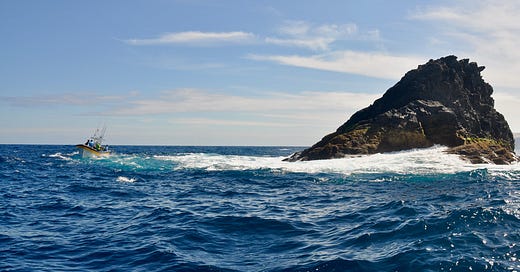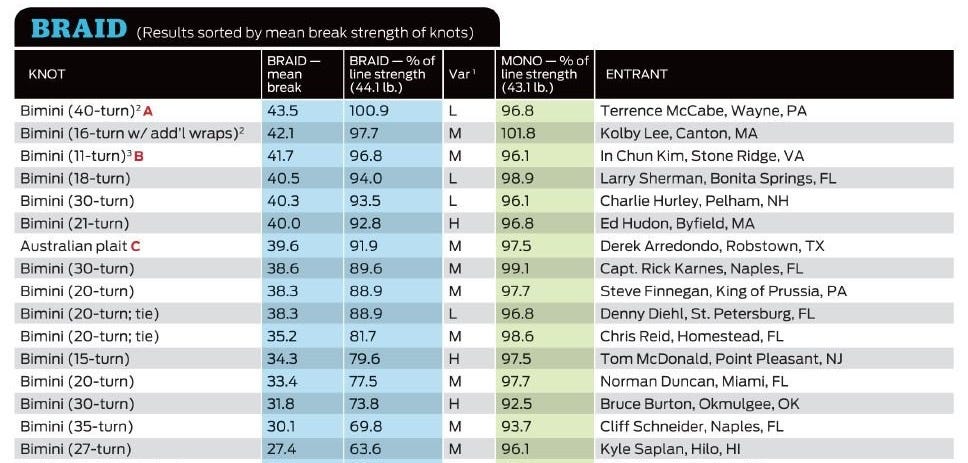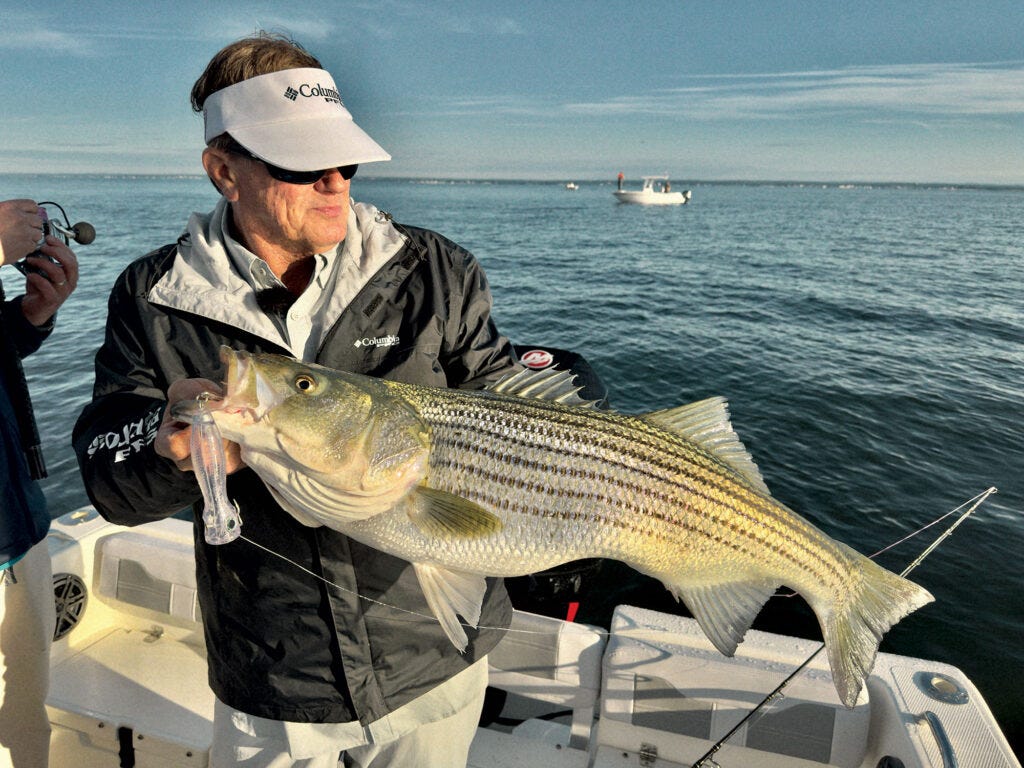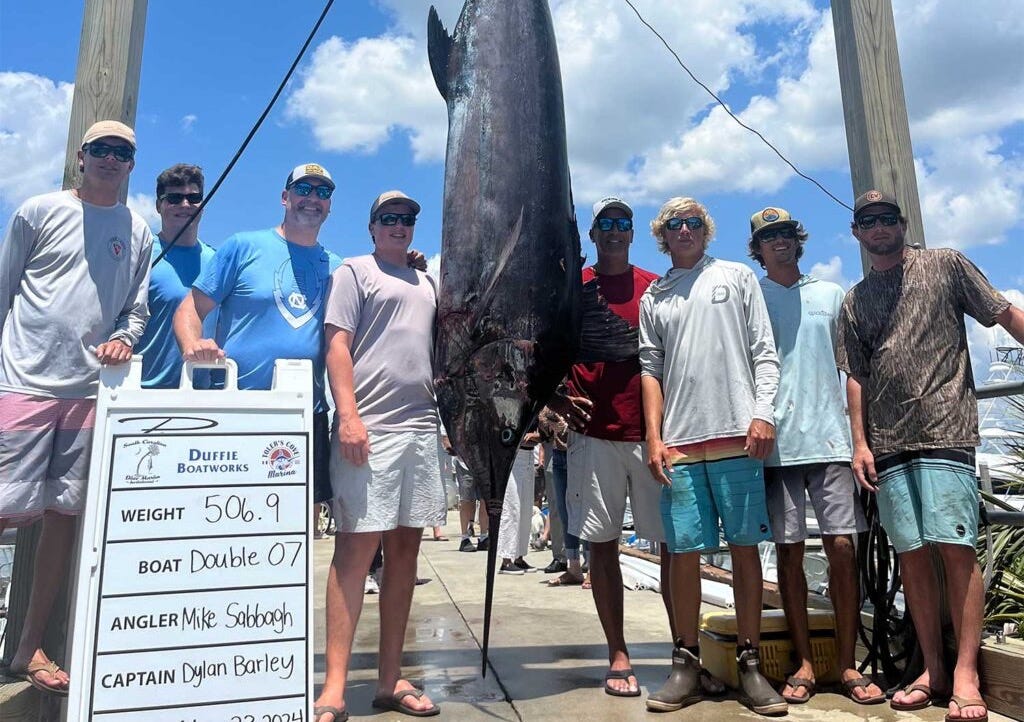The maritime rule of salvage has its origin in Roman law, which dictates that one who preserves or improves upon the misplaced property of another is owed compensation, even if the service was not requested. Let’s get out the internet trawler and get to work…
🎙️| The Mill House Podcast: Chief of Boca Grande —> Phil O’Bannon speaks about the Boca Grande fishery, Tarpon fishing in the 50's, running big boats through the Caribbean, and how disastrous the red tide is becoming.
🎥 | Daiwa & JE Wilds: The Hunt For The Unicorn
Fishing Reports | OnTheWater - FishermanMag - HullTruth - SOL
Renew HMS vessel permits here.***
Gear Guide by Tak Waterman | Super Magnum Flutter Spoon
Description | Measuring in at 8" and 9'' weighing 3.5 and 4.5oz, this Bunker imitation is Striper ready out of the box. Its colossal size and tantalizing fluttering motion has made is a staple for trophy-grade Striped bass. Designed by legendary FLW angler Ben Parker, this version of the spoon boasts saltwater durability and enticing realism.
Local Knowledge: Estuarine Ecosystems & Striped Bass
The estuarine ecosystems of RI and the south side of Cape Cod are complex, but vital to the spring awakening of both resident and migratory Striped Bass. These broad areas—composed of tidal rivers, salt ponds, marshes, and back bays—act as thermal incubators, warming much quicker than open ocean, drawing in a diversity of forage. Mud-bottomed basins, shallow eelgrass beds, and marsh creeks trap solar heat and attract early-season prey like the humble mummichog, stealthy grass shrimp, juvenile river herring, silversides, and the much-acclaimed cinder worm. These species use the dense vegetation and tidal creeks for shelter and spawning, creating a buffet for hungry stripers emerging from winter torpor or returning from the Atlantic for a pit-stop or extended stay.
Stripers in these systems can often behave like their freshwater brethren, playing the role of solitary or squad ambush predator: staging at pinch points—outflow channels, creek mouths, and drop-offs—especially on outgoing tides when the current draws forage into (relatively) deeper water. On warm days, these prey fish will push up shallow to sun, with bass on the hunt often in less than three feet of water. Southwest winds further aid warming trends by pushing surface water into leeward corners of ponds and bays. Water clarity is equally influential: a light stain provides cover while allowing bass to hunt efficiently, while too clear or too muddy conditions can inhibit a bite. Moon phase also factors in: new and full stages bring stronger tides and more aggressive bait movement, while quarter moons offer calmer, more finesse-driven conditions. Matching hatch and behavior is key—soft plastic twitch-baits, small walkers and poppers, and paddle-tails fished slowly with a natural cadence are deadly…but don’t sleep on a bigger silhouette during low-light hours. Understanding this estuarine food web, and how tide, temperature, and light affect it, is essential for predicting striped bass patterns in these uniquely fertile but fleeting Springtime windows.
Tying the Strongest Double Line Knot (SportFishMag) - “Over the years, Sport Fishing has produced several reader knot challenges. This challenge focused on knots used to create a double line, with the primary objective of finding which knots proved strongest and how those were tied. All entrants were instructed to tie three knots to create three doubled lines with the braid (PowerPro), and three again with the mono (Berkley).” —> Shoutout to the hometown hero Kolby Lee of Canton MA!
Trophy Striped Bass in Western Long Island Sound (SaltwaterSportsman) - “The plan was to cast chuggers into and along the edges of bunker schools. At our first bait pod, and after a few unanswered casts, I was about to pull my Rapala from the water when a bass clobbered it. And what a hole in the water it left! We soon released a 30-pound-class trophy. Finch missed a few strikes before scoring his first one. I had the rhythm and luck down quickly, scoring several more trophies on chuggers. The tackle was simple: 40-pound fluorocarbon leaders and Penn Battle III 5000spinning reels with 30-pound braid. Interestingly, my clear-colored lures far out-produced the hues Finch was pitching. Plug color was the only difference; we had identical tackle setups. Matching lure color with the most abundant bait is usually a sound decision.”
Back-to-Back Trophy Blue Marlin in South Carolina (MarlinMag) - “As 21-year-old Carson Paluscsak looked down at the 500-plus pound blue marlin slowly paddling behind Double 07, he battled a sudden wave of conflicting feelings. The young mate, who then worked full-time for Capt. Bobby Krivohlavek aboard his Charleston-based charter boat DayMaker, had just spent the last hour steering the fighting chair aboard Double 07 and coaching the angler through the exciting fight with the tournament-contending kill fish. In doing so, Paluscsak had directly assisted the competition. As he quickly sunk a gaff into the boatside blue, he thought to himself, “Bobby’s going to kill me.”"
Weird But True: Nordic Opioid Pollution Improved Salmon Migration (ScienceDaily) - “A Study revealed commonly detected environmental levels of clobazam -- a medication often prescribed for sleep disorders -- increased the river-to-sea migration success of juvenile salmon in the wild. The research team employed slow-release pharmaceutical implants and animal-tracking transmitters to monitor how exposure to clobazam and the opioid painkiller tramadol -- another common pharmaceutical pollutant -- affected the behaviour and migration of juvenile Atlantic salmon (Salmo salar) in Sweden's River Dal as they migrated to the Baltic Sea.”
Looking for more information about a product after reading The Weekly Salvage?
Try using GearSay, the first generative AI tool specifically tailored to help you find the right fishing tackle.
Type in a question like “what are the jigging spoon colors for striped bass based on water clarity?" to get instant results.
Thanks for reading The Weekly Salvage, until next week!
Have feedback or want to learn more?
Reach out to us on IG @Blowin_We_Goin











